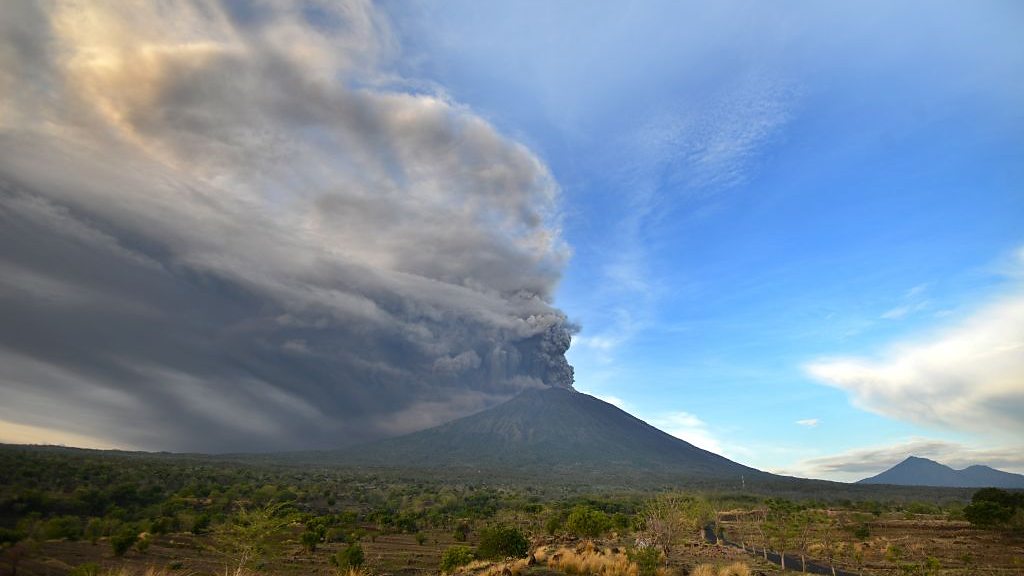Threat of forced evacuation near volcano
People who have not left their homes around a rumbling volcano in Bali may be forcibly evicted, Indonesian authorities have said.
Tens of thousands of people stayed put near Mount Agung after an alert was raised to its highest level.
Some still felt safe while others did not want to leave livestock.
A spokesman for the country's National Disaster Management Agency (BNPB) said people were checking the exclusion zone for non-evacuees.
"There are personnel doing the sweeping, if they [residents] need to be forcibly evacuated," Sutopo Purwo Nugroho said.
The closure of the island's airport was extended for a second day, leaving thousands stranded in the tourist hotspot.
Up to 100,000 people live in the area that could potentially be affected by streams of burning rock have been spotted flowing down from the mountain. But by Monday only 40,000 had left.
Mount Agung's volcanic tremors first began in September.
Since last week dark gas and ash have been billowing up to 3,400m (11,150ft) above the mountain's summit.
How close is it to a major eruption?
The BNPB raised the alert to level four from 06:00 local time (22:00 GMT on Sunday) because of an "imminent risk of disaster".The volcano is emitting "continuous ash puffs" with occasional "explosive eruptions" that could be heard 12km (7 miles) from the summit.
"The rays of fire are increasingly observed at night. This indicates the potential for a larger eruption is imminent," it said in a statement (in Indonesian) on its Facebook page.
Geologist Mark Tingay of the University of Adelaide told the BBC that eruptions were difficult to predict and it was "very hard to tell" exactly how the situation would develop.
He added that Indonesian authorities appeared "extremely well prepared", with the situation "well under control".
How are locals coping?
Authorities have widened the exclusion zone to a 10km (six-mile) radius, and have ordered people in the area to evacuate.Mr Sutopo said some people within the exclusion zone did not leave because the area was not touched during the last eruption, more than 50 years ago.
Others are concerned about their animals. Local man Komang Gede told AFP news agency: "We will try to go the evacuation centres in the afternoon, because in the morning we have to stay here to feed our livestock."
Lahars, also known as "cold lava", are slurries of rock fragments mixed with water, and have been spotted in fields and rivers near the volcano.
They are chiefly caused by pyroclastic flows - fast-moving flows of gas and ash that can reach temperatures of 800C (1470F).
Officials have been distributing masks for local residents, as ash rains down in the vicinity.


.jpeg)

.jpeg)





